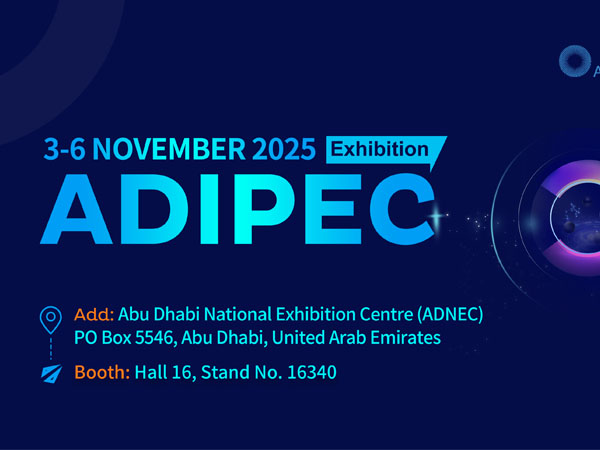
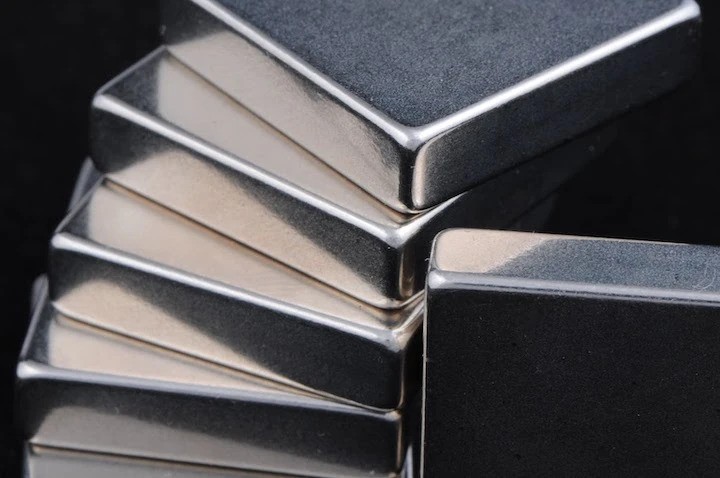

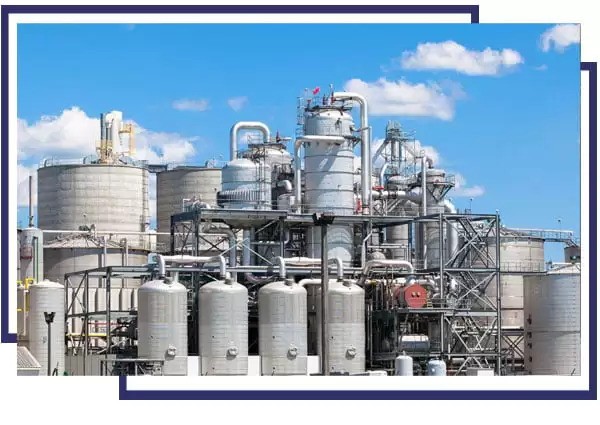
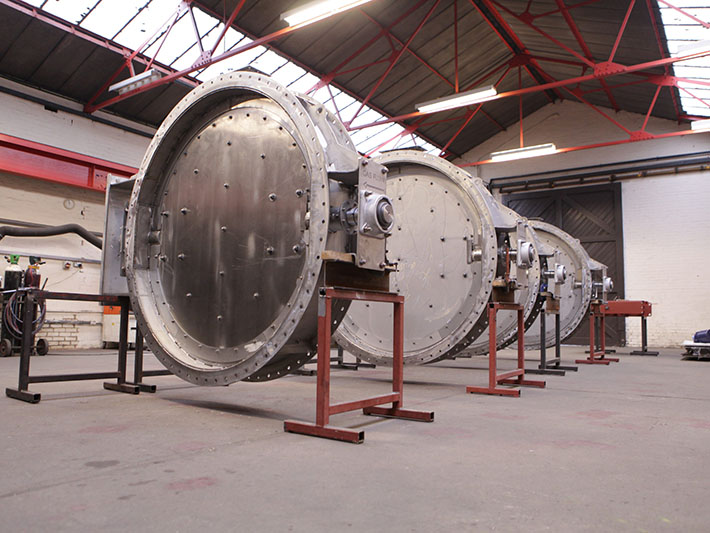

Phone
+86-731-82250427
Address
25th floor, C3 Building, Wanda Plaza, Kaifu District, Changsha, Hunan Province, China.
 May 24 2023
May 24 2023
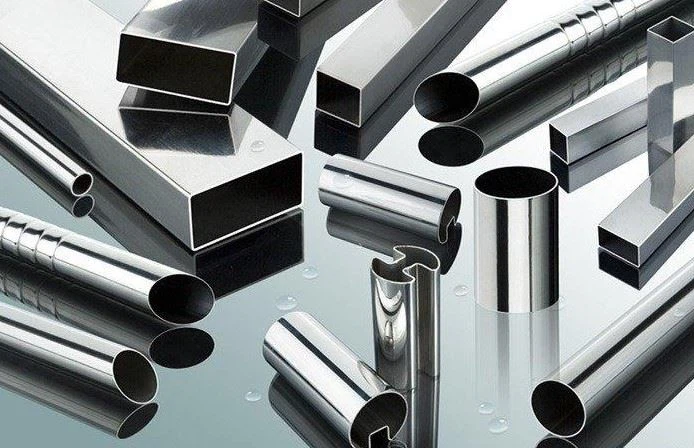
Material designation: 2205 duplex steel
American brand: UNS S31803
German grade: 1.4462
Chinese brand: 00Cr22Ni5Mo3N, F51
2205 (S31803, F51, 1.4462) duplex steel is a new product successfully researched and developed in 2000, 2205 duplex steel is a nitrogen-added duplex stainless steel (referred to as 2205 duplex steel), 2205 duplex steel is composed of 21% A duplex stainless steel composed of chromium, 2.5% molybdenum and 4.5% nickel-nitrogen alloy.
The current domestic 2205 duplex steel products include welded pipes, seamless pipes, steel plates, bars, forgings, strips, etc.
Early duplex stainless steels can withstand uniform corrosion of medium strength and chlorine stress corrosion cracking, but their performance will be greatly reduced when they are used under welding. In order to improve this situation, nitrogen was added to 2205 dual-phase steel, which not only increased the corrosion resistance, but also the welding conditions are also very good. It has high strength, good impact toughness and good overall and local stress corrosion resistance.
The yield strength of 2205 dual-phase steel is twice that of austenitic stainless steel. This feature enables designers to reduce weight when designing products, making this alloy more cost-effective than 316 and 317L. This alloy is particularly suitable for the temperature range of -50°F/+600°F. For applications beyond this temperature range, this alloy can also be considered, but there are some limitations, especially when applied to welded structures.
Due to the special performance characteristics of 2205 duplex steel, it has a wide range of applications, and it is the most widely used grade of duplex steel so far.
C≤0.030 Mn≤2.00 Si≤1.00 p≤0.030 S≤0.020 Cr 22.0~23.0 Ni 4.5~6.5 Mo3.0~3.5 N0.14~0.20 (austenite-ferrite type)
Performance supplement: main component: 22Cr-5.3Ni-3.2Mo-0.16N; national standards: NAS 329J3L, UNS S32205/S3180
Density of 2205 (S31803, F51, 1.4462) dual-phase steel: 8.0g/cm3.
2205 (S31803, F51, 1.4462) dual-phase steel tensile strength: σb≥620Mpa.
Yield strength of 2205 (S31803, F51, 1.4462) dual-phase steel: σ0.2≥450Mpa
22205 (S31803, F51, 1.4462) dual-phase steel elongation: δ≥25%.
Uniform corrosion: Due to the chromium content (22%), molybdenum (3%) and nitrogen content (0.18%) of 2205 duplex steel, the corrosion resistance of 2205 is better than 316L and 317L in most environments.
Local corrosion resistance: The content of chromium, molybdenum and nitrogen in 2205 duplex steel makes it highly resistant to pitting and crevice corrosion in oxidizing and acidic solutions.
Stress corrosion resistance: The dual-phase microstructure of 2205 dual-phase steel helps to improve the stress corrosion cracking resistance of stainless steel. In the presence of certain temperature, strain, oxygen and chloride, austenitic stainless steel will undergo chloride stress corrosion. Because these conditions are not easy to control, the use of 304L, 316L and 317L is restricted in this regard.
Anti-corrosion fatigue: The high strength and anti-corrosion ability of 2205 dual-phase steel make it have high anti-corrosion fatigue strength. Processing equipment is susceptible to corrosive environments and loading cycles, and the characteristics of the 2205 are very suitable for such applications.
The chemical composition of 2205 (S31803, F51, 1.4462) dual-phase steel can obtain an ideal microstructure of 50 α / 50 γ after 1900°/1922°F (1040°/1080°C) solution annealing treatment. If the heat treatment temperature is higher than 2000°F, it may cause an increase in the ferrite composition. Like other duplex stainless steels, 2205 duplex steel is susceptible to intermetallic phase precipitation.
The intermetallic phase precipitates between 1300°F and 1800°F, and the precipitation rate is the fastest at 1600°F. Therefore, we need to test 2205 to ensure that there is no intermetallic phase. The test refers to ASTM-A923.
Hot forming: We recommend that the forming should be carried out below 600°F as far as possible. During the hot forming process, the entire workpiece should be heated as a whole, and should be performed in the temperature range of 1750°F to 2250°F. 2205 duplex steel is very soft at this temperature. If the temperature is too high, 2205 duplex steel is prone to hot tearing. If it is lower than this temperature, the austenite will fracture. Below 1700°F, intermetallic phases will form quickly due to the effects of temperature and deformation. After the hot forming is completed, it should be solid-solution annealed at a minimum temperature of 1900°F and quenched to restore its phase balance, toughness and corrosion resistance. We do not recommend stress relief, but if you must do so, the material should be solid solution annealed at a minimum temperature of 1900°F, then quickly cooled and water quenched.
Cold forming: 2205 duplex steel can be cut and cold formed. However, due to its high strength and hardness, 2205 dual-phase steel requires cold forming more than austenitic steel, and because of its high strength, springback must be fully considered.
Heat treatment: 2205 duplex steel should be annealed at a minimum temperature of 1900°F, then rapidly cooled and water quenched. This treatment is used for solution annealing and stress relief. If the stress relief treatment is performed at a temperature lower than 1900°F, it is easy to cause the precipitation of harmful metallic or non-metallic phases.
Machinability: On high-speed machine tools, the feed rate and cutting speed of 2205 duplex steel are the same as those of 316L. If a carbonized knife is used, the cutting speed is reduced by about 20% compared with 316L. The performance of the machine and its components plays a key role here.
Welding: The weldability of 2205 alloy is very good. The required performance of 2205 dual-phase steel is that the weld metal and thermally deteriorated parts still maintain the same corrosion resistance, strength and toughness as the base metal. The welding of 2205 duplex steel is not difficult, but the welding procedure needs to be designed so that after welding, it can maintain a good phase balance and avoid the precipitation of harmful metal or non-metal phases.
2205 duplex steel application areas: neutral chloride environment, oil refining industry, petrochemical and chemical industry, chemical industry pipelines, oil and gas industry, pulp and paper industry, fertilizer industry, urea industry, phosphate fertilizer industry, seawater environment, Energy and environmental protection industry, light industry and food industry, food and pharmaceutical industry equipment, high-strength structural parts, subsea pipelines, flue gas desulphurization, osmotic desalination equipment, sulfuric acid plants, marine engineering fasteners, etc.
Variety classification: 2205 seamless pipe, 2205 steel plate, 2205 round bar, 2205 forgings, 2205 flange, 2205 ring, 2205 welded pipe, 2205 steel strip, 2205 wire and 2205 matching welding materials.
Delivery status: seamless pipe: solid solution + acid white, length can be set; plate: solid solution, pickling, trimming; welded pipe: solid solution acid white + RT% flaw detection, forging: annealing + car polish; Bars are forged and rolled, surface polished or car polished; strips are delivered after cold rolling, solid solution soft state, and deoxidized; wire rods are finely ground in solid solution pickled disk or straight strips, solid solution straight strips Delivery in light state.
